
If an irrigation system is something you are looking at having installed or installing yourself over a couple of weekends, it can be an excellent investment and insurance to keep your lawn and landscape healthy and thriving. Keep reading to learn about irrigation systems, installations, and how to maintain them.
What is an Irrigation System and What are the Benefits?
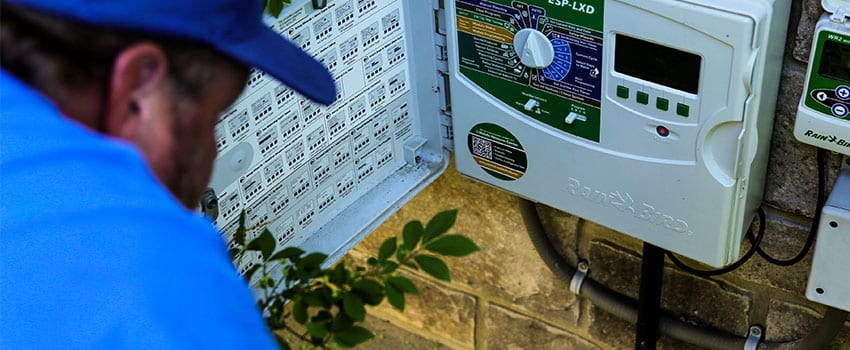
An irrigation system is a sprinkler system for your home that is underground. It gives you, as a homeowner, much more control over when your lawn is watered and how much. The underground system of pipes is buried 8-12 inches deep. There will be sprinkler heads that are placed around the lawn in strategic locations to optimize your watering effectiveness and efficiency.
The sprinkler heads, valves and pipes work together on a pressure system. When the valve activates it allows the water to pass through the pipe for a particular area and pushes the sprinkler heads above the ground while they spray water, and when the vale closes the water stops, the heads retract below again. If you’re using them in a garden, these sprinkler heads can be installed with a portion of the sprinkler head above ground to avoid foliage blockages.
You will be able to control the valves and when they come on through an irrigation controller. It tells the valves when it’s time to open and close. An additional product that is also a great investment is a rain sensor. A rain sensor notifies the controller that the lawn doesn’t need to be watered due to rainfall. Depending on the model your rain sensor, you can have it delay irrigation watering up to 48 hours after a rainfall event.
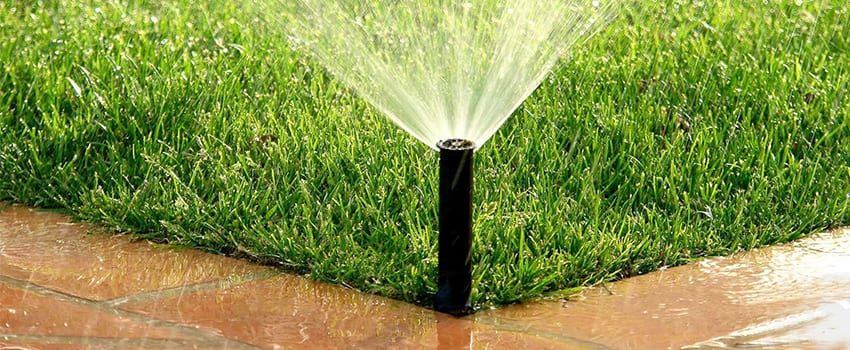
Some of the benefits of these systems are that they are convenient, and they can save you money in several ways. If you travel a lot or are away from home, having this system installed can have excellent benefits as you do not need to worry about whether your landscape is going to be watered or not.
An irrigation system can save you money and help with water conservation. When you water your lawn with a hose or an oscillator, it can be a massive waste of water if not monitored, timed and adjusted correctly. If you overwater or underwater you can kill your grass or plants, which will cost time and money to replace. A properly designed and installed irrigation system can target specific areas, allow you to choose the required amount of water needed, and reduce your water bill costs.
The Components
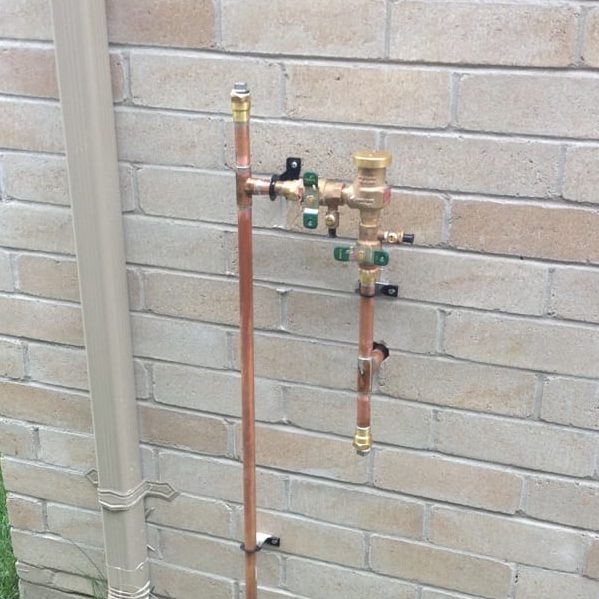
Backflow Preventer
In most water systems, water flows in only one direction. Sometimes, water can switch directions, creating backflow. There are many reasons why it’s essential to avoid this, including contaminated water flowing back into the City water supply. Having a backflow preventer is crucial to your irrigation system. A testable Backflow device is now a mandatory requirement for all irrigation systems in Ontario.
Valves and Valve Box
The sprinkler valve box will be where your wire splices, manifold and valves are located. The valve box can either be installed flush in the grass or under the mulch in a garden. This is an integral part of the system, if you bury it under mulch, it is imperative to know where it’s located, we always suggest a good record drawing needs to be created after your system is installed.
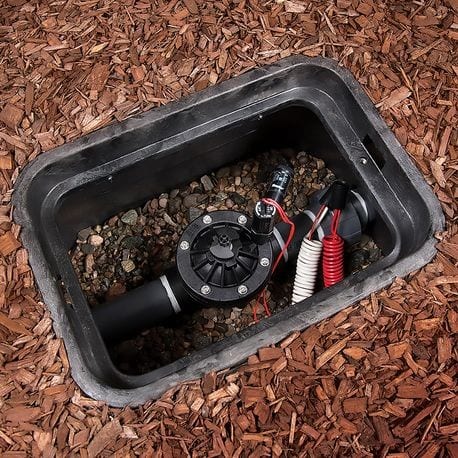
Master Valve
The master valve is a vital valve during damage or water loss. It’s an electric valve that is located at the main water supply. It reduces water loss if there is a leaky valves or a leak in your pressure line. The master valve can help prevent turning off the main water supply if there is a repair needed.
Zone Valves
The zone valves turn on each section of your irrigation system known as zones. Typically only one zone can run at a time, your controller will turn on each zone valve on for a set period of time until that area has adequate water. The zone valves are fed by the pressure line and hold back the water from the pressure line until the controller activates the valve. When this valve is activated, it allows water into the zone line and the sprinklers or drip will run.
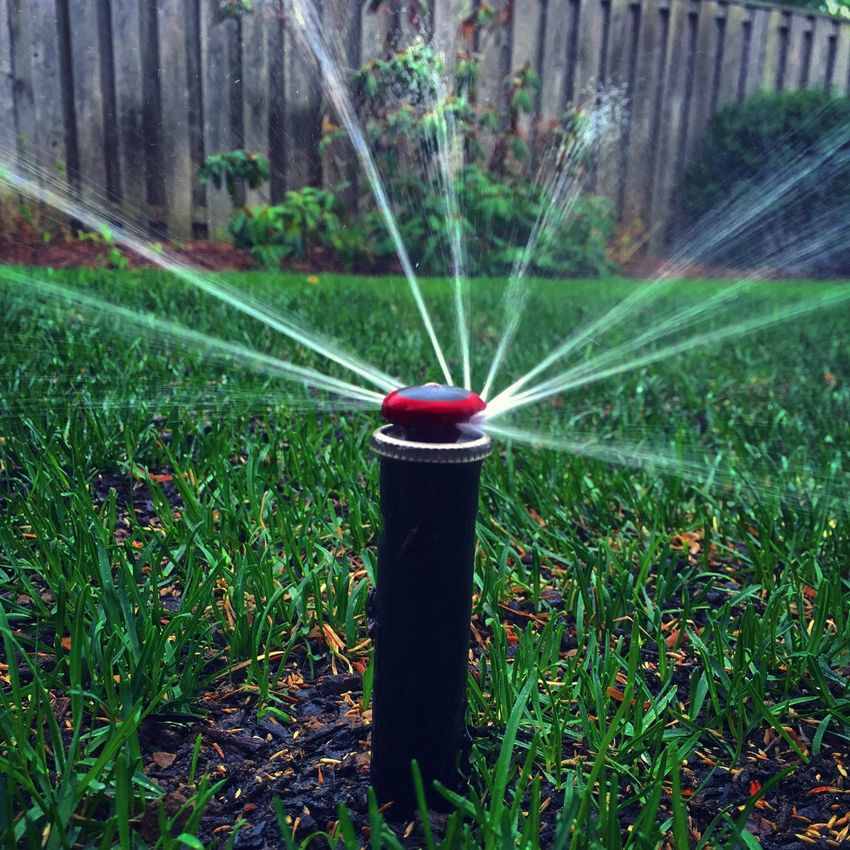
Fixed Spray Head
These sprinklers are used typically for gardens or small lawn areas. They can spray from 5-18ft and come in different heights. 2”,4”, 6” and 12”. These heads spray a set arc pattern.
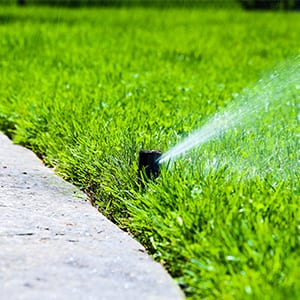
Rotor Head
Used for large lawn areas, these sprinklers have a single spray that can reach 30-50ft. These heads rotate to cover their arc pattern.
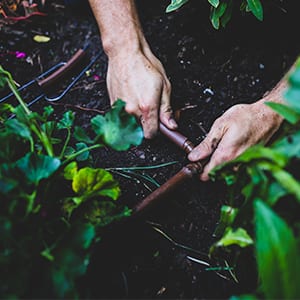
Drip Line
Drip Line is the most effective and water-efficient way to water your garden beds. Drip Line is laid out rowed 12-18” apart until your garden is completely covered, the drip will have emitters spaced 12”-18” apart to give your garden a grid style of watering. Laid under the mulch, the drip effectively waters the roots of your vegetation and has very little evaporation, wind, and wastewater loss.
Maintenance
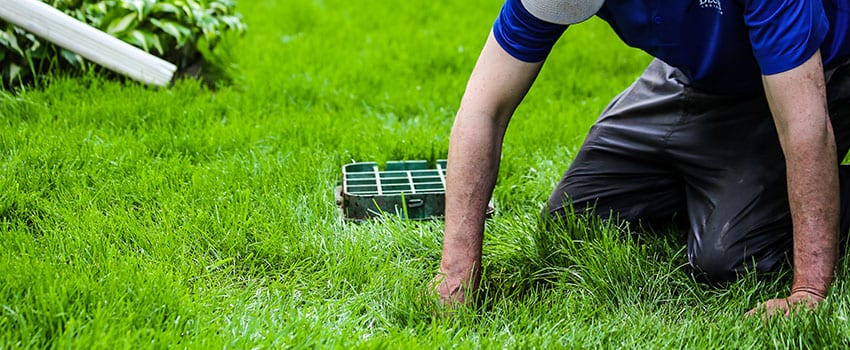
Like most good things in life, an irrigation system will require some maintenance over its lifespan. Preventative maintenance will help you avoid disaster and expensive repairs. By doing this, you are keeping up on little things here and there, which allows it to run it’s best.
Cleaning your sprinkler heads regularly will help them work properly. Dirt and grass will get stuck in them as they protrude and retract into the ground, and you should give them a good clean every month. If they get stuck in their upright position, it can be troublesome. They can become damaged by people walking on the lawn, extra dirt and debris getting stuck, or even destroyed by the lawnmower if you don’t notice them.
If you live in a place where winter gets cold with frost, you will need to winterize your irrigation system. This can be a challenging job, but it’s best to do it before freezing temperatures to prevent a pipe or your backflow to freeze and bursts, which will be an expensive fix in the spring. Water that is sitting in the pipes should be blown out before freezing temperatures hit. If you’re not able to do this on your own, consult a professional to help you out.
Cost of Installation

Hiring a professional to install your new irrigation system is beneficial to get the job done right the first time, and can save you time and money versus doing it yourself. The cost will depend on the size of your lawn, how complex you want the system to be, and the cost of the components you want. It’s always recommended to get a few quotes from trusted professionals in your area to compare before choosing someone to work with. Look for a contractor who is in good standing with Landscape Ontario and is certified with the Irrigation Association.
If you’re up for the DIY challenge of this big job, you can spend significantly less by going to your local irrigation contractor, having them design the system, pull the pipe for you with their vibratory plow for mess-free installation and have them sell you the required products. Ensure they give you a tutorial of how all the products go together before they leave.
